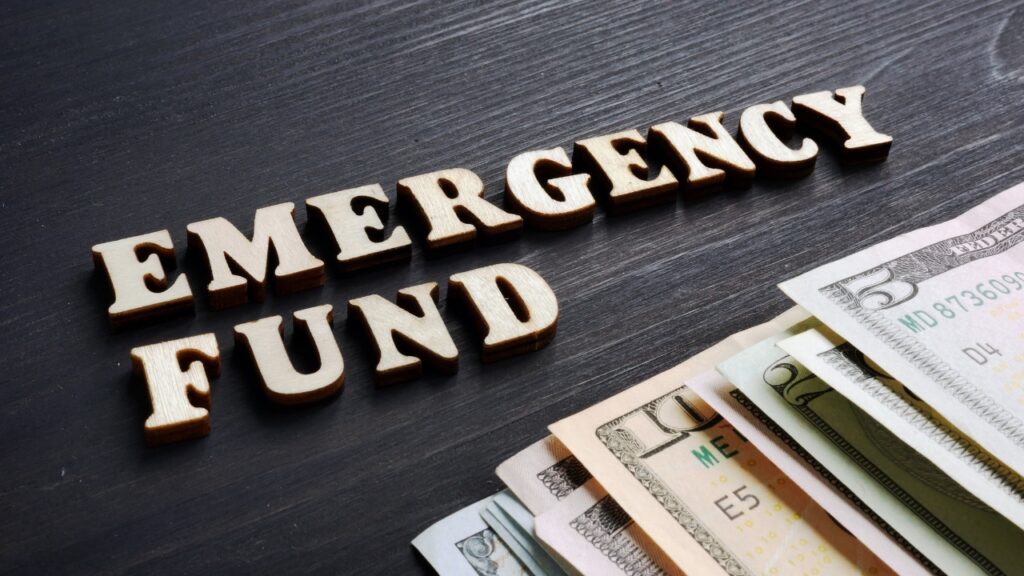In today’s unpredictable world, having a robust emergency fund is more important than ever for achieving financial security. Yet, many individuals struggle with how to calculate the ideal emergency fund tailored to their unique financial circumstances. This comprehensive guide will walk you through the process, taking into account essential factors like income, monthly expenses, job stability, and family size. By mastering these calculations, you’ll be equipped to build a safety net that not only safeguards your finances in times of crisis but also affords you peace of mind. Join us as we delve into practical budgeting tips and a savings guide designed to fortify your financial resilience.
Understanding Emergency Funds
An emergency fund is a crucial component of financial security. Let’s explore its importance, basics, and common mistakes to avoid.
Importance of Financial Security
Financial security provides peace of mind and stability in an unpredictable world. It’s the foundation that allows you to weather unexpected storms without derailing your long-term financial goals.
An emergency fund is a key pillar of this security. It acts as a buffer against life’s unforeseen challenges, from sudden job loss to medical emergencies.
By having a robust emergency fund, you’re not just protecting yourself; you’re investing in your future financial well-being. It’s a proactive step that can prevent small setbacks from becoming major financial crises.
Basics of an Emergency Fund
An emergency fund is a dedicated savings account set aside for unexpected expenses or financial emergencies. It’s your financial safety net, ready to catch you when life throws curveballs.
The general rule of thumb is to save 3-6 months of living expenses. However, this can vary based on individual circumstances such as job stability, health, and family responsibilities.
Your emergency fund should be easily accessible but separate from your regular checking account. This separation helps resist the temptation to dip into it for non-emergencies while ensuring quick access when truly needed.
Common Missteps in Fund Planning
One common mistake is underestimating the amount needed for an adequate emergency fund. Many people save too little, leaving themselves vulnerable to financial shocks.
Another pitfall is keeping emergency savings in high-risk investments. While the potential for higher returns is tempting, the goal of an emergency fund is stability and accessibility, not growth.
Lastly, some individuals make the error of not regularly reviewing and adjusting their emergency fund. As life circumstances change, so should the size and structure of your financial safety net.
Calculating Your Ideal Fund
Determining the right size for your emergency fund involves considering both your income and expenses. Let’s explore different calculation methods to find the best approach for you.
Income-Based Calculation
An income-based approach to calculating your emergency fund uses your monthly income as a baseline. This method is straightforward and can be a good starting point for many individuals.
The general recommendation is to save 3-6 times your monthly income. For example, if you earn $5,000 per month, your emergency fund target would be between $15,000 and $30,000.
This method is particularly useful for those with stable incomes and predictable expenses. However, it may not account for significant variations in monthly spending or unique financial obligations.
Expense-Based Calculation
An expense-based calculation focuses on your monthly living costs rather than income. This approach can provide a more accurate picture of how much you’d need to maintain your lifestyle during an emergency.
Start by totaling your essential monthly expenses, including rent/mortgage, utilities, food, insurance, and debt payments. Multiply this total by 3-6 months to get your target emergency fund amount.
This method is often more precise, especially for those with variable incomes or high fixed costs. It ensures your fund is tailored to your actual financial needs.
Balancing Both Approaches
The most comprehensive approach to calculating your ideal emergency fund is to consider both income and expenses. This balanced method provides a more nuanced and personalized target.
Calculate both your income-based and expense-based targets. If there’s a significant difference, consider factors like job stability, health, and financial obligations to determine which end of the range is more appropriate for you.
Remember, these calculations are starting points. Your ideal emergency fund may need to be larger or smaller based on your unique circumstances and risk tolerance.
Factors Influencing Your Fund
Your emergency fund isn’t one-size-fits-all. Several key factors can influence how much you should save and how you structure your fund.
Job Stability Considerations
Job stability plays a crucial role in determining the size of your emergency fund. Those in more volatile industries or with less secure positions may need larger safety nets.
If you’re a freelancer or gig worker with irregular income, consider saving on the higher end of the recommended range. This extra buffer can help smooth out income fluctuations.
For those in more stable positions, a smaller fund might suffice. However, always factor in the time it would take to find new employment in your field if necessary.
Family Size and Needs
Your family situation significantly impacts your emergency fund requirements. Larger families typically need more substantial funds to cover increased living expenses.
Consider factors like the number of dependents, their ages, and any special needs. For instance, families with young children or elderly parents may need to account for potential medical expenses.
Single individuals or couples without dependents might be able to maintain a smaller fund, but should still ensure it’s adequate for their lifestyle and obligations.
Lifestyle and Risk Tolerance
Your lifestyle choices and personal risk tolerance are important factors in determining your ideal emergency fund size.
If you have a more lavish lifestyle with high fixed costs, you’ll need a larger fund to maintain it during emergencies. Conversely, those with more modest lifestyles might require less.
Your risk tolerance also plays a role. If financial uncertainty causes you significant stress, a larger emergency fund can provide peace of mind. Those more comfortable with risk might opt for a smaller fund.
Building and Maintaining Your Fund
Creating and sustaining an emergency fund requires discipline and strategy. Let’s explore effective budgeting tips, savings guides, and growth strategies.
Budgeting Tips for Success
Effective budgeting is the foundation of building a robust emergency fund. Start by tracking all your expenses for a month to get a clear picture of your spending habits.
Categorize your expenses into necessities and discretionary spending. Look for areas where you can cut back, redirecting those savings to your emergency fund.
Consider using the 50/30/20 rule: allocate 50% of your income to needs, 30% to wants, and 20% to savings and debt repayment. Adjust these percentages as needed to accelerate your emergency fund growth.
Effective Savings Guide
To build your emergency fund efficiently, automate your savings. Set up automatic transfers from your checking account to a dedicated emergency savings account each payday.
Start small if necessary. Even saving 1% of your income is a step in the right direction. Gradually increase this percentage as you become more comfortable with your budget.
Look for high-yield savings accounts to store your emergency fund. While the primary goal isn’t growth, earning some interest can help your fund keep pace with inflation.
Strategies for Consistent Growth
Consistency is key in growing your emergency fund. Treat your fund contributions as a non-negotiable expense, just like rent or utilities.
Whenever you receive unexpected money – such as tax refunds, bonuses, or gifts – consider allocating a portion to your emergency fund.
Regularly review and adjust your contributions. As your income grows or debts decrease, redirect more money to your emergency fund until you reach your target.
Achieving Financial Resilience
A well-funded emergency account is a cornerstone of financial resilience. Let’s explore its benefits, hear from those who’ve reaped its rewards, and outline next steps for your financial security.
Benefits of a Sufficient Fund
A robust emergency fund provides more than just financial security; it offers peace of mind and freedom. Knowing you can handle unexpected expenses reduces stress and anxiety about money.
With a sufficient emergency fund, you’re less likely to rely on high-interest credit cards or loans during crises. This can save you significant money in interest payments over time.
An emergency fund also gives you the flexibility to take calculated risks, such as changing careers or starting a business, without jeopardizing your financial stability.
Real-Life Testimonials
“Having an emergency fund saved my family when I unexpectedly lost my job. We were able to cover our expenses for four months without going into debt, giving me time to find a new position.” – Sarah, 35
“Our emergency fund was a lifesaver when our roof needed urgent repairs. We avoided the stress of scrambling for funds or taking out a loan.” – Mike, 42
These real-life examples illustrate how an emergency fund can provide crucial support during challenging times, preventing financial setbacks from becoming long-term problems.
Next Steps for Financial Security
- Calculate your ideal emergency fund size using the methods discussed earlier.
- Open a dedicated high-yield savings account for your emergency fund.
- Set up automatic transfers to start building your fund immediately.
- Review your budget to identify areas where you can increase your savings rate.
- Regularly reassess your emergency fund needs as your life circumstances change.
Remember, building financial security is a journey. Start where you are, be consistent, and celebrate each milestone as you work towards your goal. Your future self will thank you for the peace of mind and financial resilience you’re creating today.
Conclusion
In conclusion, constructing and maintaining a sufficient emergency fund is an essential part of building a secure financial future. This guide has walked you through understanding the importance of an emergency fund, common pitfalls to avoid, and practical methods to calculate your ideal fund size. By considering personal factors such as job stability, family size, and lifestyle, you can tailor your safety net to suit your unique needs.
Remember, achieving financial resilience is a continuous process. With disciplined budgeting, strategic saving, and regular reassessment of your financial cushion, you can effectively prepare for life’s unexpected events. As you work diligently to fortify your emergency fund, you empower yourself to face financial uncertainties with confidence and ease, ensuring peace of mind for you and your loved ones. Embrace this journey towards financial security, and allow it to be the foundation for a stable and prosperous future.
Check this post Chapter 7 vs. Chapter 11
FAQ
The general recommendation is to save 3-6 months’ worth of living expenses. This amount can vary based on your personal circumstances, such as job stability and family size. Assess both your income and essential expenses to determine a tailored amount that suits your needs.
Start small and aim for consistency. Begin by saving a small percentage of your income, even if it’s just 1%. Automate your savings by setting up automatic transfers to your emergency fund account. Gradually increase your savings rate as your financial situation improves.
Keep your emergency fund in a high-yield savings account or a money market account. These options offer some interest while keeping your funds easily accessible in case of emergencies. Avoid investing your emergency fund in stocks or other high-risk assets, as the primary goals are stability and liquidity.
Your emergency fund is typically considered fully funded when it can cover 3-6 months of essential living expenses. However, this may vary based on your individual risk tolerance and lifestyle. Regularly reassess your fund’s adequacy, especially after significant life changes like a new job or family expansion.
No, your emergency fund should only be used for genuine emergencies, such as unexpected medical expenses or urgent home repairs. For non-emergency expenses, consider setting separate savings goals to keep your emergency fund intact.
Regularly review your emergency fund at least once a year or after major life events, such as a change in employment, marriage, or the birth of a child. This helps ensure your fund remains adequate for your current circumstances.
It’s generally advisable to maintain a separate emergency fund to safeguard against unexpected expenses. However, if you have high-interest debt, consider a balanced approach where you allocate funds to both debt repayment and emergency savings.




